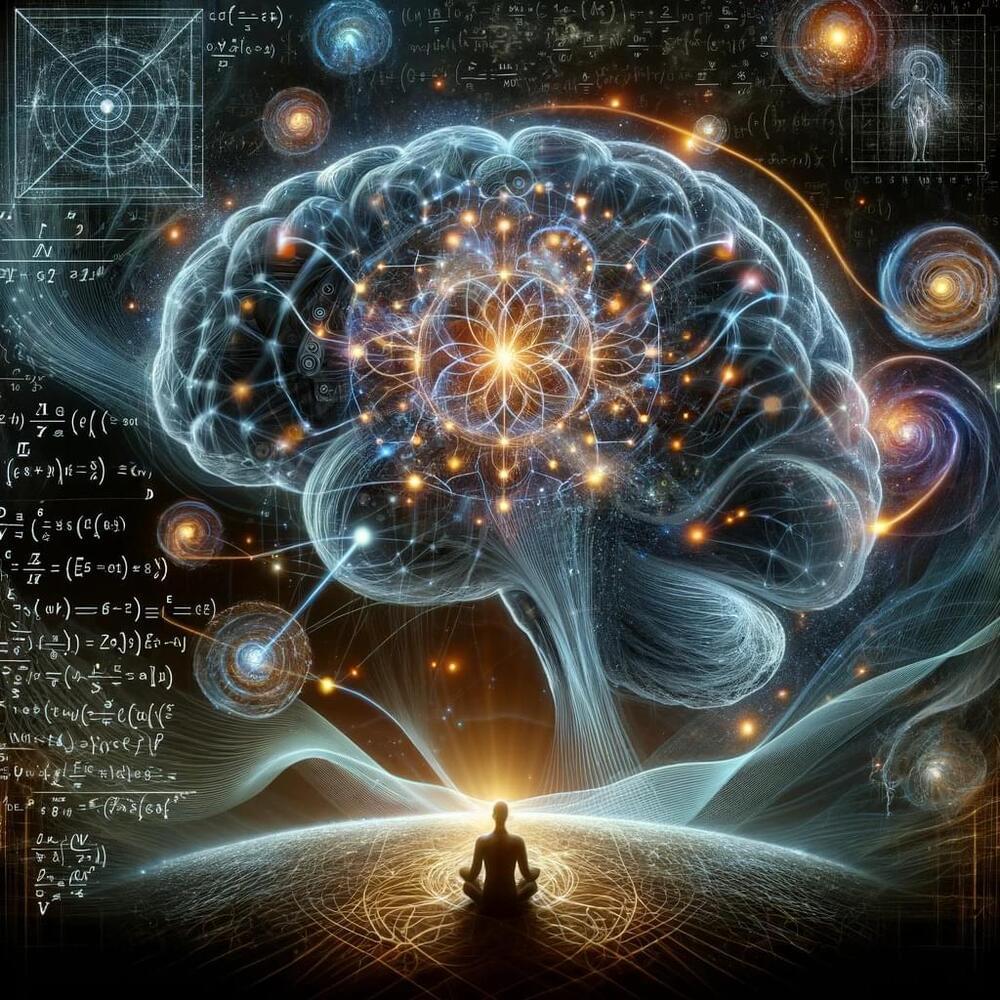Fermat’s last theorem puzzled mathematicians for centuries until it was finally proven in 1993. Now, researchers want to create a version of the proof that can be formally checked by a computer for any errors in logic.
By Alex Wilkins

Fermat’s last theorem puzzled mathematicians for centuries until it was finally proven in 1993. Now, researchers want to create a version of the proof that can be formally checked by a computer for any errors in logic.
By Alex Wilkins

This paper introduces a novel theoretical framework for understanding consciousness, proposing a paradigm shift from traditional biological-centric views to a broader, universal perspective grounded in thermodynamics and systems theory. We posit that consciousness is not an exclusive attribute of biological entities but a fundamental feature of all systems exhibiting a particular form of intelligence. This intelligence is defined as the capacity of a system to efficiently utilize energy to reduce internal entropy, thereby fostering increased order and complexity. Supported by a robust mathematical model, the theory suggests that subjective experience, or what is often referred to as qualia, emerges from the intricate interplay of energy, entropy, and information within a system. This redefinition of consciousness and intelligence challenges existing paradigms and extends the potential for understanding and developing Artificial General Intelligence (AGI). The implications of this theory are vast, bridging gaps between cognitive science, artificial intelligence, philosophy, and physics, and providing a new lens through which to view the nature of consciousness itself.
Consciousness, traditionally viewed through the lens of biology and neurology, has long been a subject shrouded in mystery and debate. Philosophers, scientists, and thinkers have pondered over what consciousness is, how it arises, and why it appears to be a unique trait of certain biological organisms. The “hard problem” of consciousness, a term coined by philosopher David Chalmers, encapsulates the difficulty in explaining why and how physical processes in the brain give rise to subjective experiences.
Current research in cognitive science, neuroscience, and artificial intelligence offers various theories of consciousness, ranging from neural correlates of consciousness (NCCs) to quantum theories. However, these theories often face limitations in fully explaining the emergence and universality of consciousness.

Until recently, researchers were unsure of the minimum thickness of a transparent substance required to take in a given quantity of light.
Konstantin N. Rozanov of the Institute for Theoretical and Applied Electrodynamics in Russia discovered more than two decades ago the amount of light that a gadget might absorb at various wavelengths if one side of it was coated in metal. This metal establishes a barrier where light is absorbed or bounced back, simplifying the mathematical solution.

Duke researchers find limits of energy absorption in transparent materials.
Researchers at Duke University in the US have determined the theoretical limits of how much electromagnetic energy a transparent material can absorb. This can help researchers optimize device designs in the future, but it has also ended a 20-year wait for a mathematical solution to the problem.

Everybody involved has long known that some math problems are too hard to solve (at least without unlimited time), but a proposed solution could be rather easily verified. Suppose someone claims to have the answer to such a very hard problem. Their proof is much too long to check line by line. Can you verify the answer merely by asking that person (the “prover”) some questions? Sometimes, yes. But for very complicated proofs, probably not. If there are two provers, though, both in possession of the proof, asking each of them some questions might allow you to verify that the proof is correct (at least with very high probability). There’s a catch, though — the provers must be kept separate, so they can’t communicate and therefore collude on how to answer your questions. (This approach is called MIP, for multiprover interactive proof.)
Verifying a proof without actually seeing it is not that strange a concept. Many examples exist for how a prover can convince you that they know the answer to a problem without actually telling you the answer. A standard method for coding secret messages, for example, relies on using a very large number (perhaps hundreds of digits long) to encode the message. It can be decoded only by someone who knows the prime factors that, when multiplied together, produce the very large number. It’s impossible to figure out those prime numbers (within the lifetime of the universe) even with an army of supercomputers. So if someone can decode your message, they’ve proved to you that they know the primes, without needing to tell you what they are.

Neural networks have been powering breakthroughs in artificial intelligence, including the large language models that are now being used in a wide range of applications, from finance, to human resources to health care. But these networks remain a black box whose inner workings engineers and scientists struggle to understand.

The work, facilitated by the Chicago Quantum Exchange (CQE) and led by a team that includes UD, Argonne, JPMorgan Chase and University of Chicago scientists, lays groundwork for future applications—and highlights the need for cross-sector collaboration.
The third category, stochastic modeling, is used across the sciences to predict the spread of disease, the evolution of a chemical reaction, or weather patterns. The mathematical technique models complex processes by making random changes to a variable and observing how the process responds to the changes.
The method is used in finance, for instance, to describe the evolution of stock prices and interest rates. With the power of quantum computing behind it, stochastic modeling can provide faster and more accurate predictions about the market.
According to Safro, one of the things that makes the field and ongoing research in this area exciting is the unknown.

A team of researchers from Peking University and the Eastern Institute of Technology (EIT) in China has developed a new framework to train machine learning models with prior knowledge, such as the laws of physics or mathematical logic, alongside data.
Chinese researchers are on the brink of pioneering a groundbreaking approach to developing ‘AI scientists capable of conducting experiments and solving scientific problems.
Recent advances in deep learning models have revolutionized scientific research, but current models still struggle to simulate real-world physics interactions accurately.

“Without a fundamental understanding of the world, a model is essentially an animation rather than a simulation,” said Chen Yuntian, study author and a professor at the Eastern Institute of Technology (EIT).
Deep learning models are generally trained using data and not prior knowledge, which can include things such as the laws of physics or mathematical logic, according to the paper.
But the scientists from Peking University and EIT wrote that when training the models, prior knowledge could be used alongside data to make them more accurate, creating “informed machine learning” models capable of incorporating this knowledge into their output.
